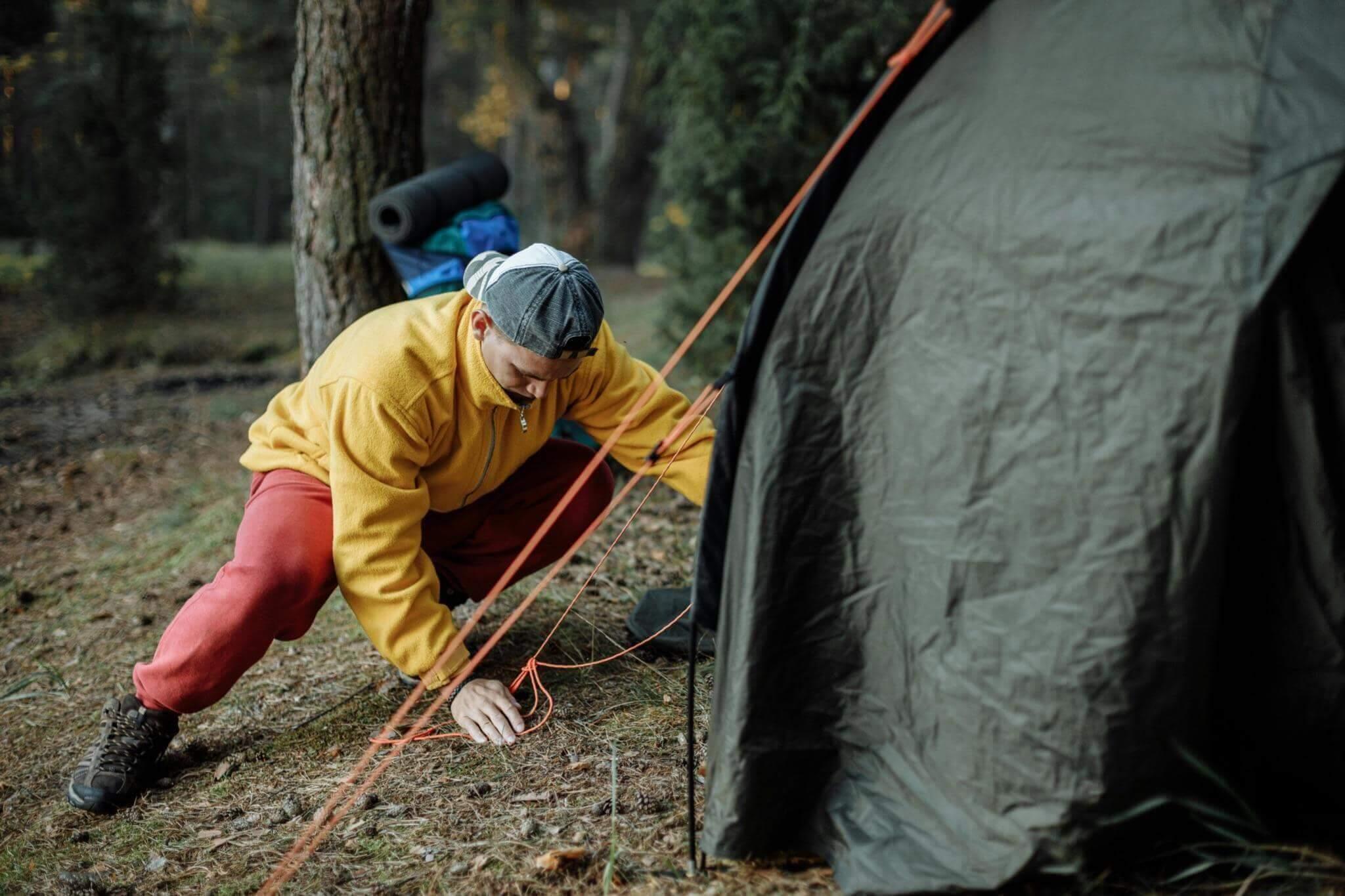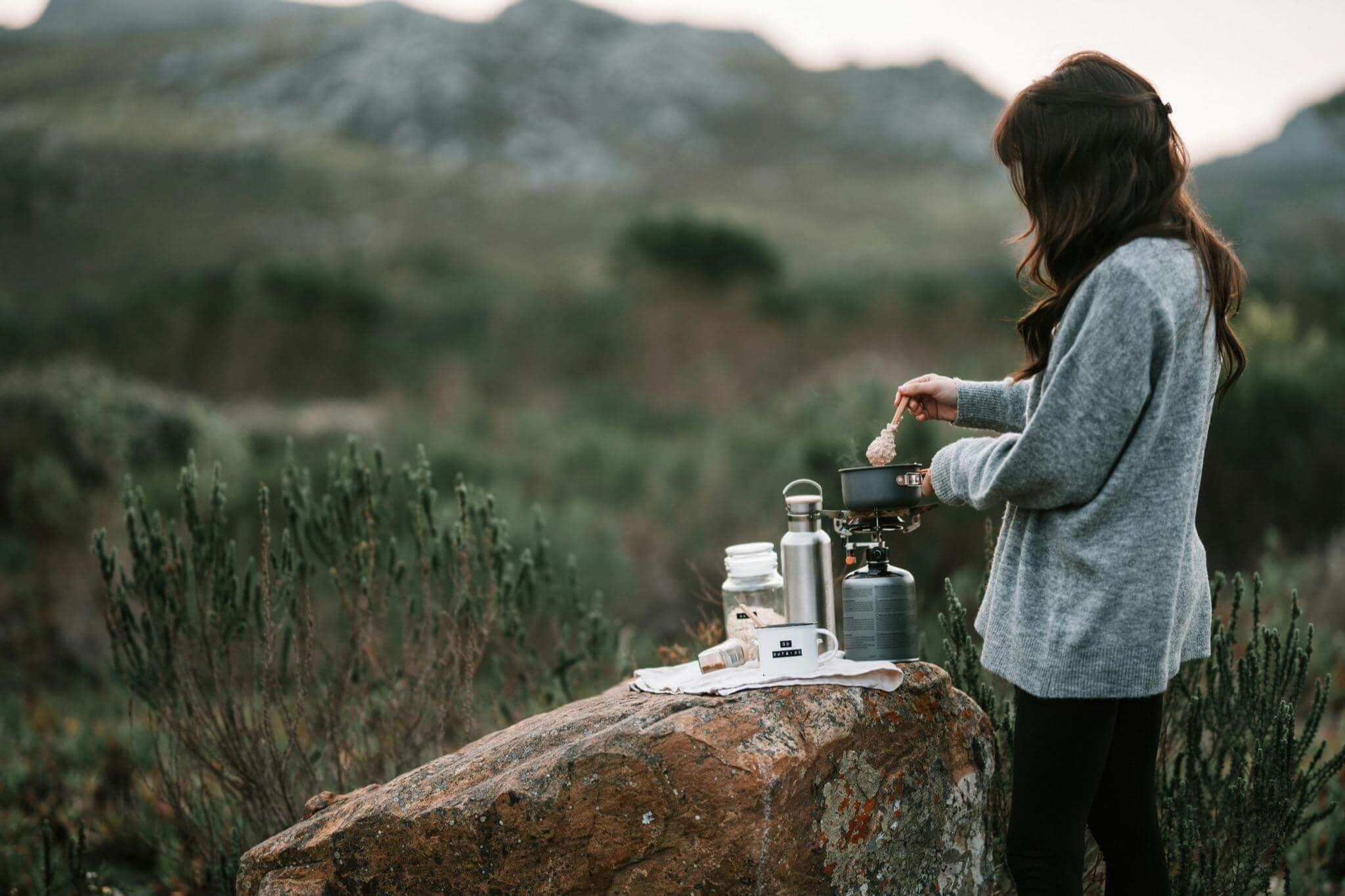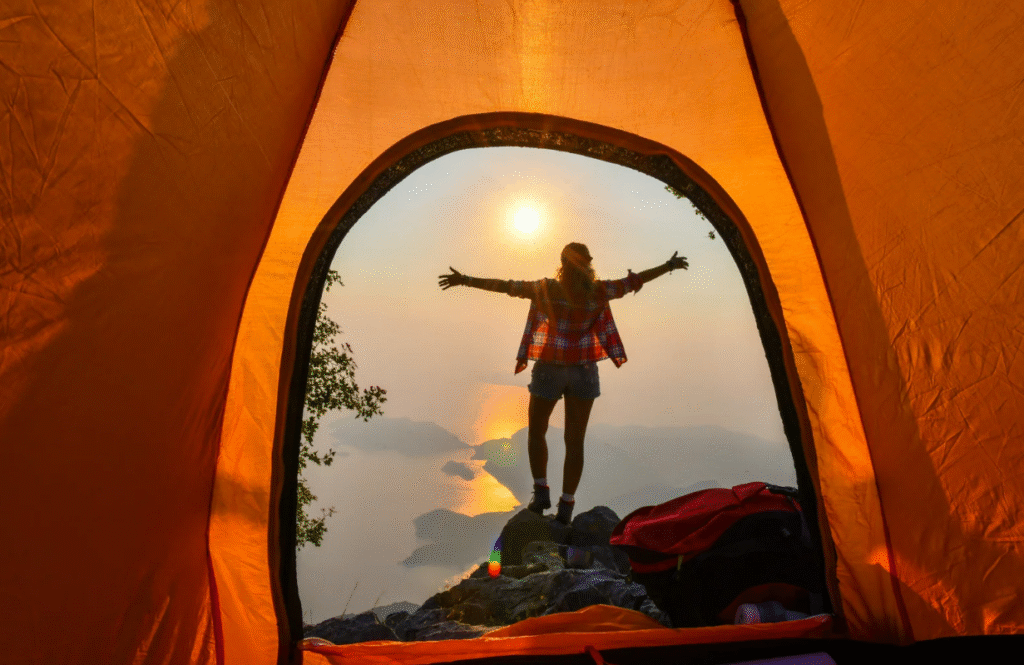There’s something magical about stepping off the grid and into the quiet hum of nature. No Wi-Fi, no grocery runs, just tall pines, open skies, and the freedom to breathe deeply. As a mom who’s always chasing a good adventure with a camera in one hand and snacks in the other, I’ve learned that off-grid camping is one of the most honest and refreshing ways to reconnect with nature, with your family, and with yourself. But let me tell you, it takes some planning to make it a success and to keep the hangry meltdowns to a minimum.
This essentials packing guide is everything I’ve learned from our off-the-beaten-path escapes. It’s the kind of list I wish I had the first time we loaded up the car and hoped for the best. Whether you’re heading into the wild solo or with the whole crew, here’s how to pack smart and stay cozy, fed, and smiling even when your socks get soggy.
Shelter: Your Mobile Fortress
If you can’t sleep, you can’t function. Cold bones, wet socks, sleepless nights… no one needs that. Bring something you trust. If you’re hauling in a tent, it better be sturdy. Not just waterproof. Not just lightweight. A proper four-season tent is a wise investment, even if you’re only planning a short trip. You’ll be glad you have it when the wind decides to turn unpredictable. You’ll want something between you and the ground too. Groundsheet, sleeping pad, maybe both. The earth doesn’t care about your comfort.

Cooking & Food Storage: Eat Well, Survive Better
Out here, mealtime is more than fuel, it’s therapy. A warm bowl of something after a long hike can fix almost anything. A small, reliable stove does the trick. You don’t need a luxury setup, but you need something that lights even when your fingers are numb and the rain is sideways.
You’ll want backup fuel. Always. If your stove dies and there’s no dry wood for a fire, you’ll be the one eating peanut butter off a spoon and wondering how many trail bars a human can survive on.
And let’s talk about animals that wants your food more than you do. Store your meals in something secure. Hard-sided containers are best, but hanging food works too, if you know how to tie a proper knot. Cleaning up matters. You might think it’s just a few crumbs or a greasy pan, but animals don’t need much of an invitation.
Pack biodegradable soap. It won’t solve everything, but it helps. Food? Keep it simple. Dry stuff. High-calorie. Easy to make when you’re tired. Nobody wants to cook a risotto at 7,000 feet after ten miles uphill.
Cooking & Food Storage: Mealtime Magic in the Wild
One of my favorite parts of camping, especially off-grid, is the way a simple warm meal can turn the whole day around. After a long hike or a chilly morning, there’s something deeply comforting about cooking over a tiny flame while the kids chase squirrels in the distance. In this essentials packing guide, food isn’t just fuel. It’s a moment to slow down, gather, and share something delicious, even when you’re miles from the nearest store.
Cooking in the wild doesn’t have to mean dry protein bars. You don’t need a fancy camp kitchen, but a small, reliable stove is a must. Choose one that lights easily even when your fingers are frozen or it’s raining sideways. Don’t forget extra fuel — always bring more than you think you’ll need. If the stove sputters out and there’s no dry wood around, you’ll be glad you did.
Food storage matters too. Trust me, critters will sniff out snacks faster than toddlers at a birthday party. Hard-sided containers work best, but hanging food from a tree (if you know how to do it safely) can work in a pinch. And clean up really well — even a greasy pan can attract unexpected dinner guests. Pack biodegradable soap, a good scrubber, and make cleaning up part of the routine.
Keep your meals simple but satisfying. Think dry goods, hearty snacks, and easy-to-prep dinners. When you’re bone-tired at the end of a long day, no one wants to fuss over gourmet pasta. A warm soup, cheesy quesadillas, or good old instant oats with cinnamon can feel downright luxurious under the stars.
Hydration Essentials: Water Is Life
Water. More important than food, more important than gear, more important than everything else combined. You won’t always find a stream when you need one. You won’t always trust the ones you find. And drinking straight from nature, unless you’ve got a death wish or a love of gastrointestinal distress, is a gamble you don’t want to take.
Take a filter. Bring purification tablets too, just in case your filter breaks or freezes. And carry more water than you think you’ll need. A couple of liters for the hike, another few for camp. Dehydration sneaks in slowly, and it messes with your judgment. You won’t even notice until it’s bad.

Tools & Gear: Your Wilderness Toolbox
This part is where experience starts to show. Or where lack of experience starts to hurt. A knife—just one—is essential. You don’t need something tactical or fancy. Just sharp, dependable, and ideally fixed-blade.
Cut cordage, prep food, make kindling. It’ll do it all. Then there’s the multitool. That little collection of mini gadgets that gets you out of all sorts of weird situations you never saw coming. Loose screw on your stove? Pliers. Broken zipper? Tiny scissors. Splinter? Tweezers.
You’ll want cordage. Paracord is the favorite, for good reason. Build a shelter, hang wet clothes, fix a broken pack strap, its uses are endless.
Headlamps? Non-negotiable. Your hands need to be free when you’re stumbling back to camp or answering nature’s call at 2 a.m. Bring extra batteries. Always.
Start your fire like your life depends on it, because it might. Waterproof matches, a lighter, and a ferro rod are the trifecta. Don’t rely on one.
And for longer stays, especially if you’re setting up a semi-permanent camp, you might consider an electric chainsaw. A compact, battery-powered one can make short work of deadwood for fire and shelter. Just remember: charge it fully, use it responsibly, and check park regulations before firing it up. Noise travels far in the quiet of the forest.
Bring a tarp. You won’t always need it. But when you do? It becomes your roof, your floor, your windbreak, your emergency poncho.
Clothing: Layer It
No one’s comfortable when they’re cold and wet. You don’t need fashion. You need function. Start with a base layer that keeps sweat off your skin. Wet skin is cold skin, and cold skin is misery. From there, you want insulation—something like fleece or down. Finally, you need a shell that actually repels water and wind.
Don’t skimp on socks. Wool is worth every penny. Bring extras and keep one pair sacred, dry, and reserved for sleep. Gloves. Hat. Maybe even a balaclava if you’re going high or late in the season. And when you get back to camp, kick off the boots and slide into something soft. Camp shoes aren’t a luxury; they’re a reward.
First Aid & Safety: Prepare For The “What Ifs”
It’s always the one thing you didn’t think would happen. That’s the one that does. A real first aid kit isn’t just band-aids. It has gauze, antiseptic, tape, painkillers, tweezers, antihistamines, your personal meds. Learn how to use it before you need to. Insects? They’ll find you. Bring repellents that actually work. Signal gear is small but mighty. Whistle, mirror, even a flare if you’re way off-grid.
There’s a version of you that only shows up out here. No filters. No roles to play. Just breath, sweat, and silence.
Into the wild camping strips life down to its roots. It’s about fire, water, and shelter. It’s where everything matters more and less at the same time. You get blisters, yes. And maybe a bug bite or twelve. But you also get clarity. Laughter that echoes through the trees. Stars so close they feel like they’re watching you back. Pack smart. Respect the wild. Be brave, but be kind. And when you come back, bring stories.
Final Words on Off-Grid Camping
Here’s the truth: off-grid camping isn’t always easy but it’s always worth it. You trade convenience for clarity. Running water for real connection. And in that space, something beautiful happens. You’ll find starlit skies that take your breath away, quiet mornings filled with birdsong and campfire coffee, and family memories stitched together by shared effort and laughter.
When you pack with purpose, your trip becomes less about surviving and more about thriving. So whether it’s your first wilderness trek or your fifth, let this essentials packing guide be your go-to before every adventure. Bring the basics. Leave behind the noise. And come home with stories that only the wild can write.



